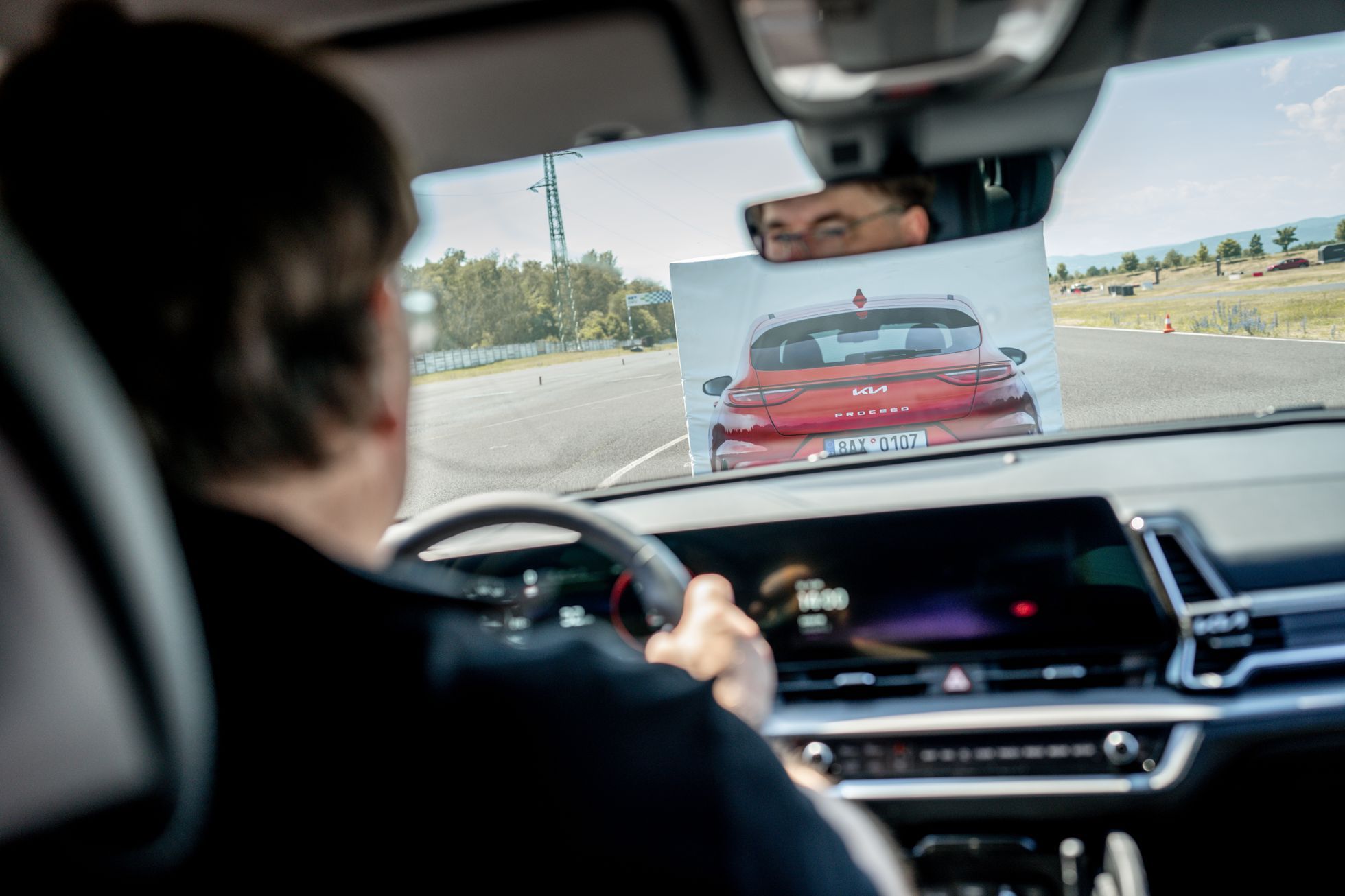When at the end of May, a Czech hockey legend overlooked a tram in his Kie at a crossroads, newspapers all over the world wrote about it. Apparently, however, no one asked himself how it was possible that Jaromír Jágr was not warned against a collision in an electric car riddled with safety assistants. Now Kia has organized an event at the Most polygon, where journalists could test the functioning of the anti-collision system in practice.
“Drive at forty and keep up the pace,” I hear a radio call. Forty is not exactly dizzying speed, yet with the car we quickly approach the sail, which is a photo of the rear of another car. From the driver’s point of view, everything looks too realistic, he would have hit the brake a long time ago. However, Kia continues to move, as if it hadn’t frosted. Only when a collision with a photo seems inevitable will the car react with heavy braking. Two or three meters separates us from the obstacle in the final…
“This test is quite a challenge for the car,” says Tomáš Hampl, a Kii technical expert, about the experiment. Under normal circumstances, the area in front of the car is guarded by two devices at the same time: a camera capturing silhouettes and a radar, whose waves bounce off a fixed obstacle. In the case of a sail, however, the radar is out of the game, because paper, plastic or textile are not an obstacle for it.
It was enough to give a turn signal
The Kia’s autonomous emergency braking system, abbreviated FCA, is standard on all major models of the brand. The device can detect other vehicles, but also cyclists and pedestrians. When some of it crosses the car’s path, it can stop on its own.
The electric Kia EV6, which was driven by Jaromír Jágr on the day of the accident, was equipped with an additional device marked JX in addition to the FCA system. This is an optional extra that can determine whether another car is moving in the path where the car is about to turn.
For JX’s assistant, Jágr’s accident is a model situation: the famous hockey player turned in the opposite direction over the tram belt, so the device was supposed to detect a tram approaching from behind. However, according to behind-the-scenes information from the carmaker, one of the best shooters in the history of the NHL forgot to launch a turn signal before the maneuver. If he had done so, the car would know which direction it was headed and would warn him against the tram.
An assistant to wash
However, even the emergency braking system can be fooled when a situation arises for which it is not programmed. Tomáš Hampl cites a case in which, during the same crash test at the Most polygon, a man deliberately ran in front of the tarpaulin with a photograph of the car, but at the last moment he disappeared from the track of the moving car. The camera, which originally focused on “pedestrians,” was no longer enough to identify the new obstacle just behind him.
Also behind the second case of failure that Tomáš Hampl experienced on the track was the human factor. Despite the instructor’s instructions, the driver depressed the accelerator pedal to the floor and held it there throughout the test. “It actually overwhelmed the system,” the expert assessed the situation.
Thus, even in 2022, collision protection systems are not completely perfect: a vigilant driver is still able to react a little faster and can better evaluate the situation he sees in front of him.
But most similar assistants are programmed to act as inattentive drivers. A typical example is a lane departure assistant – staying between the lines on the road should not be a problem for a sane driver. However, if he does not hold a mobile phone in his hand and does not write a text message.
However, hand in hand with advances in artificial intelligence, electronic security assistants are constantly improving. The previous generation of these devices, for example, could not completely stop the car in front of an obstacle, only mitigating the impact. The latest one can avert the accident. However, it is still short on unpredictable driver shorts.
–


